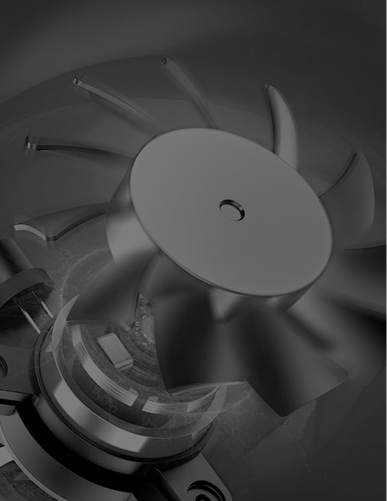Qinlang focuses on providing high-quality products and considerate services, and is committed to meeting every expectation of our customers.
The DKT-133 Cooling Ventilation Double Inlet Air Conditioning Fan is d...
See DetailsThe working principle of the fan revolves around the conversion of mechanical energy into pneumatic energy. A fan functions by increasing the pressure and velocity of air or gas, thereby enabling its movement through a designated space. This process is not only vital in residential ventilation but is also fundamental in numerous industrial and commercial applications. Whether it is an industrial inline duct blower or a high-performance axial fan, the core mechanism always focuses on efficient air handling and control.

At its core, a fan is an energy conversion device. It takes the mechanical energy provided by an electric motor or another prime mover and transforms it into the kinetic energy and pressure energy of the gas. This mechanism is universally consistent, regardless of fan type, but its application can differ based on the configuration and desired airflow characteristics.
Let's begin by examining the blower principle, which is commonly used in systems requiring higher pressure output. The blower principle typically involves a rotating impeller or offset rotor that creates a pressure differential, allowing air to be drawn in and forced out. One common design using this method is the inline duct blower, which is favored for its ability to boost airflow in lengthy duct runs, especially in HVAC systems where airflow drops due to resistance.
The blower principle is essential in various engineering applications, such as cooling, fume extraction, and localized exhaust. In these applications, the inline duct blower provides a compact, efficient solution that leverages high-pressure output while maintaining space-saving design. The versatility of the blower principle ensures that air can be efficiently moved through narrow ducts or confined building structures.
On the other hand, the axial fan working principle is based on air moving parallel to the shaft around which the blades rotate. This configuration is distinct from radial or centrifugal systems. The axial fan working principle enables high-volume airflow with relatively low pressure, making it ideal for cooling electronic equipment, ventilating rooms, and other general-purpose air circulation tasks.
The axial fan working principle also finds significant usage in modern HVAC systems. In situations requiring continuous airflow, such as server rooms or industrial facilities, the axial fan working principle offers energy-efficient operation and long service life. Unlike the blower principle, which is ideal for high-pressure demands, the axial fan working principle is suitable for moving large volumes of air with minimal resistance.
Both the inline duct blower and axial fans are commonly employed together in large HVAC configurations. While the axial fan working principle maintains general circulation, the inline duct blower compensates for pressure drops across ducting systems. Understanding the blower principle and axial fan working principle helps engineers and users select the right solution for their needs.
In summary, the working principle of the fan is grounded in fluid dynamics and energy transfer. Whether using the blower principle or the axial fan working principle, and whether implemented as an inline duct blower or another configuration, the fundamental goal remains the same: efficient, controlled movement of air. These mechanisms enable comfort, safety, and performance in countless everyday and industrial environments.